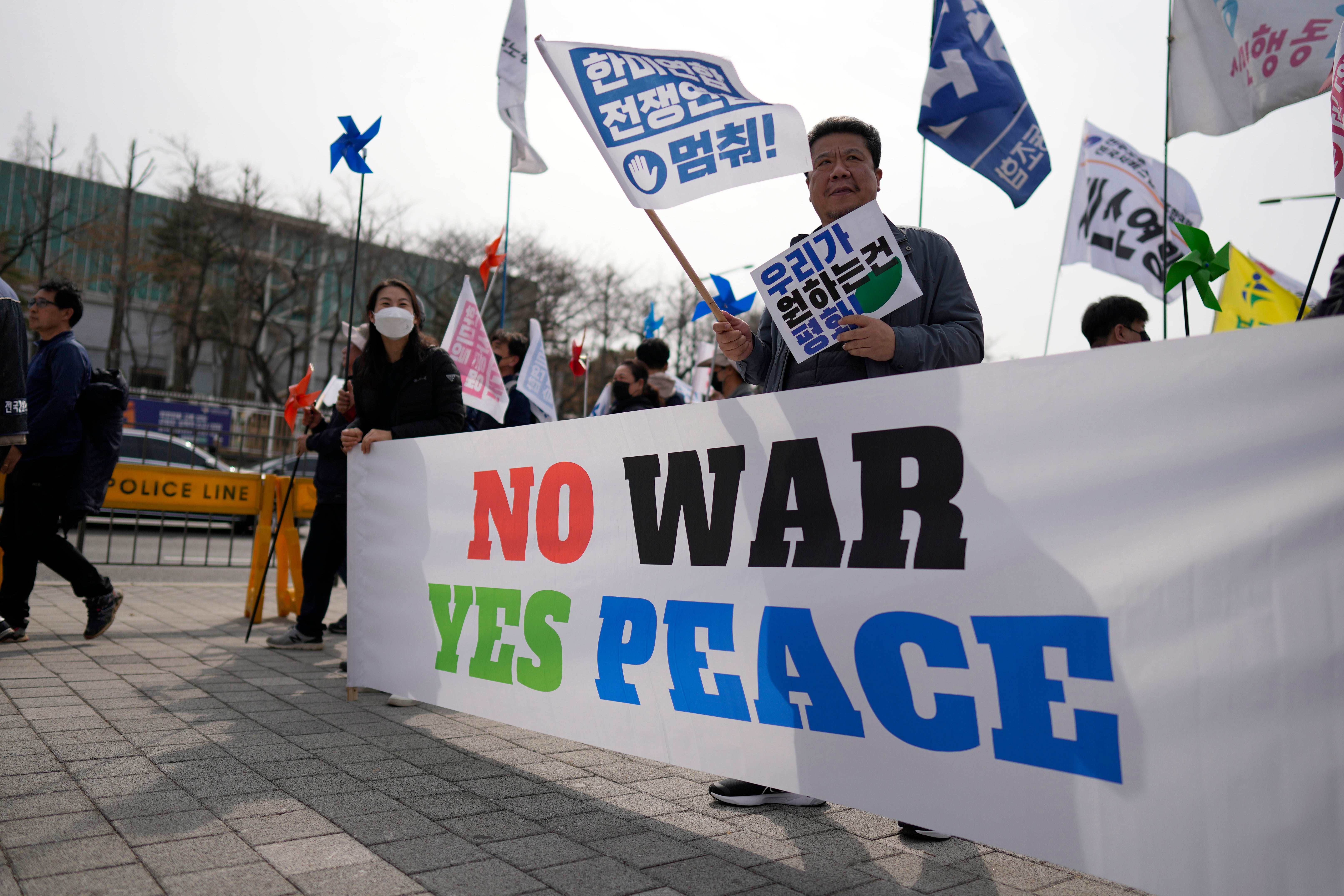North Korea tests submarine-launched missile, Seoul confirms
North Korea says it test-fired two cruise missiles from a submarine off its east coast, the latest in its series of weapons launches

North Korea said Monday it has conducted submarine-launched cruise missile tests, days after its leader Kim Jong Un ordered his troops to be ready to repel its rivals’ “frantic war preparation moves.”
The test on Sunday came a day before the U.S. and South Korean militaries begin large-scale joint military drills that North Korea views as a rehearsal for invasion.
The official Korean Central News Agency said Monday that the missile launches were meant to confirm the reliability of the weapons system and gauge underwater-to-surface offensive operations of the country's submarine units.
Coming off a record year in missile testing, North Korea's weapons demonstrations this year include test launches of an intercontinental ballistic missile, short-range missiles and a purported long-range cruise missile system in recent weeks.
Experts say North Korea's escalated testing and threats are meant to claim an ability to conduct nuclear strikes in South Korea and against the U.S. mainland. Kim, who sees his nuclear arsenal as his strongest guarantee of survival, is trying to force the United States into accepting the North as a nuclear power and wants to negotiate badly needed economic concessions from a position of strength, analysts say. Sunday's missile tests show the North’s resolve to respond with “overwhelming powerful forces” to “the U.S. imperialists and the South Korean puppet forces," which the news agency said "are getting evermore undisguised in their anti-(North Korea) military maneuvers.”
North Korea has been pushing hard for years to acquire the ability to fire nuclear-armed missiles from submarines, the next key piece in an arsenal that includes weapons with the potential range to reach the U.S. mainland.
Earlier Monday, South Korea's military said it had detected the launch from a submarine in waters near the North's eastern port city of Sinpo on Sunday.
South Korea's Joint Chiefs of Staff said that South Korean and U.S. intelligence authorities were analyzing details of the operation.
North Korea sees regular South Korea-U.S. military exercises as a major security threat, though the allies say their drills are defensive. Some observers say North Korea uses its rivals’ drills as a pretext to test weapons and modernize its nuclear arsenal to secure an upper hand in dealings with the United States.
Last Thursday, Kim supervised a live-fire artillery drill simulating attacks on a South Korean airfield. He ordered his military to maintain the capability to “overwhelmingly respond to and contain” action by enemies, which he said included “all sorts of more frantic war preparation moves,” according to the North’s official Korean Central News Agency.
KCNA reported Sunday that Kim also convened a key meeting on military affairs to adopt unspecified practical steps to make “more effective, powerful and offensive use of the war deterrent” in light of U.S. and South Korean maneuvers.
South Korean-U.S. drills are to run until March 23. They include a computer simulation called the Freedom Shield 23 and several combined field training exercises, collectively known as the Warrior Shield FTX.
The Freedom Shield 23 is designed to strengthen the allies’ defense and response capabilities amid North Korea’s increasing nuclear threats and other changing security environments, according to the South Korean and U.S. militaries.
The allies’ last large field training, called Foal Eagle, was held in 2018, the militaries said.
In past years, the U.S. and South Korea had cancelled or scaled back some of their regular drills as part of diplomatic efforts to denuclearize North Korea and out of concerns about the COVID-19 pandemic. But the two countries began expanding their exercises after North Korea conducted a record number of missile tests in 2022 and adopted an increasingly aggressive nuclear doctrine.
In recent weeks, the U.S. flew powerful, long-range bombers for joint aerial drills with South Korean fighter jets. South Korea’s Defense Ministry said the deployment demonstrated U.S. commitment to use a full range of military capabilities, including nuclear, to defend its Asian ally in the event of outright conflict with North Korea.